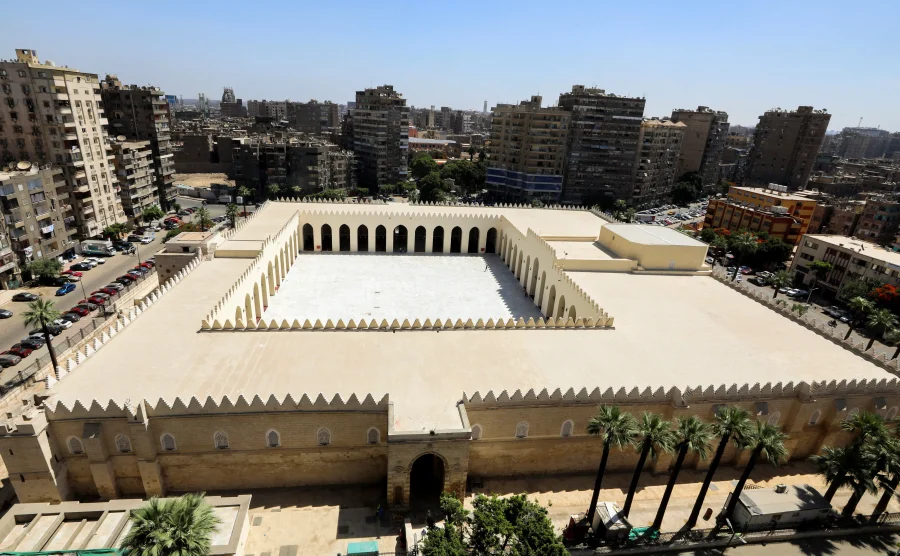A 13th century mosque that fell into disrepair after being used over the years as a soap factory, a slaughterhouse and a fort reopened in Cairo on Monday after undergoing a long restoration.
The mosque of Al-Zhahir Baybars, built under Mamluk rule in 1268, spans an area of three acres just north of central Cairo, making it Egypt’s third-largest mosque.
The mosque underwent mechanical and chemical restoration to bring it back to its original condition, said Tarek Mohamed El-Behairy, who supervised the restoration.
“Some parts were destroyed, some parts have been dismantled because they were structurally unsuitable to remain in the mosque,” he said.
“But we were very keen, even in the reconstruction process, to work according to the correct archaeological style.”
The restoration, which cost $7.68 million, was co-funded with Kazakhstan and began in 2007.
For 225 years, the mosque was either closed, abandoned or had operated for non-religious purposes that contributed to its disrepair.
During Napoleon’s campaign in Egypt it was used as a military fort, then under Ottoman rule in the 19th century as a soap factory. Later, when the British invaded Egypt in 1882, it was used as a slaughterhouse.
Al-Zahir Baybars was a prominent figure in Egypt’s history credited with cementing Mamluk rule in Egypt which spanned three centuries up to 1517.—Reuters










